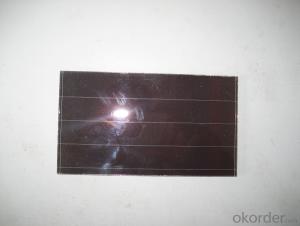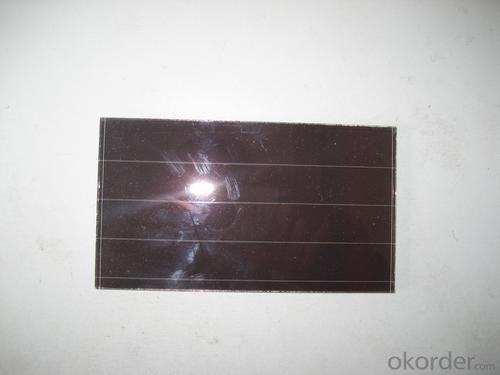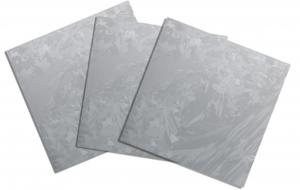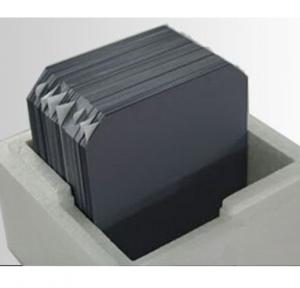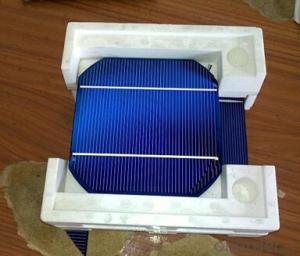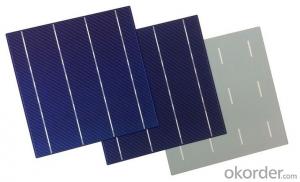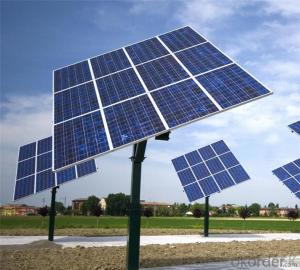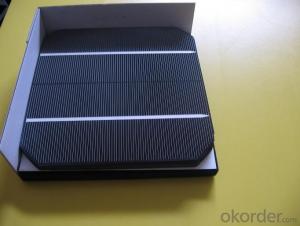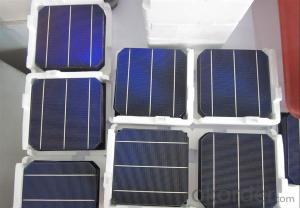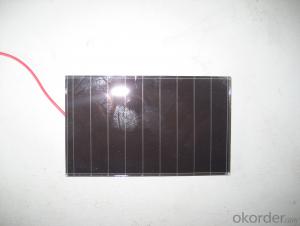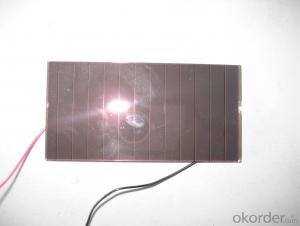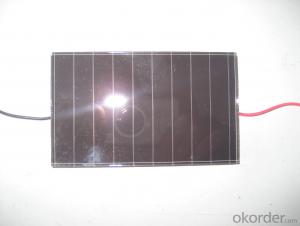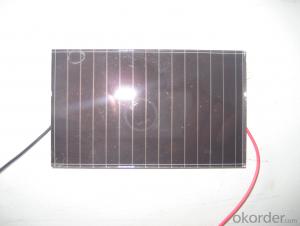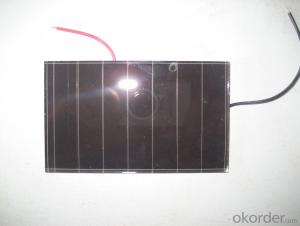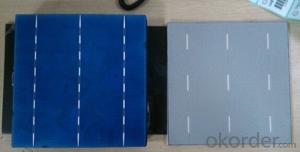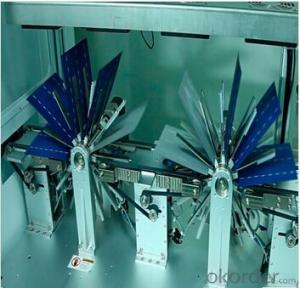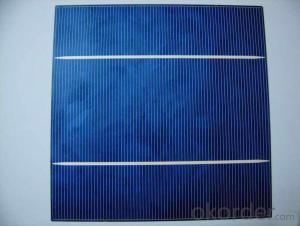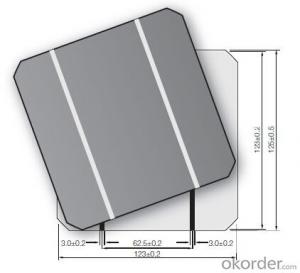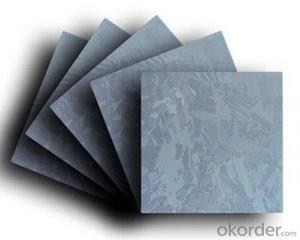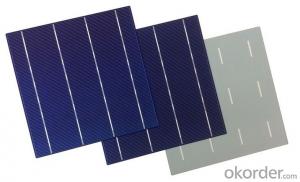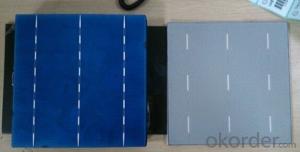Amorphous Silicon Dice Silicon Wafer Solar Panel Specification 1
- Loading Port:
- China Main Port
- Payment Terms:
- TT OR LC
- Min Order Qty:
- -
- Supply Capability:
- -
OKorder Service Pledge
OKorder Financial Service
You Might Also Like
Pv modules at present, the mainstream products are still in silicon as the main raw materials, only in terms of silicon raw material consumption, production 1 mw of crystalline silicon solar cell, need 10 to 12 tons of high purity silicon, but if use the same silicon materials used to produce thin film amorphous silicon solar cell can produce more than 200 mw.
From the perspective of energy consumption, amorphous silicon solar battery only 1-1.5 years of energy recovery period, more embodies its contribution to energy saving in the manufacturing process.
Component occupies a high proportion of costs in a photovoltaic system, the component prices directly affect the system cost, and thus affect the cost of photovoltaic power generation. Calculated at the current price of components, the same money, buy amorphous silicon products, you can get more close to 30% of the power components.
2, more power
For the same power of solar cell array, amorphous silicon solar cell is about 10% more than monocrystalline silicon, polycrystalline silicon battery power. This has been the Uni - Solar System LLC, Energy Photovoltaic Corp., Japan's Kaneka Corp., the Netherlands Energy research institute, and other organizations and experts confirmed that the Photovoltaic industry.
In sunny, that is to say, under the high temperature, amorphous silicon solar cell components can show more excellent power performance.
3, better low light response
Due to the characteristics of amorphous silicon atoms are arranged disorderly, the electron transition no longer comply with the restriction of traditional \"selection rule\", as a result, its light absorption characteristics and there are big differences monocrystalline silicon material. Amorphous silicon and monocrystalline silicon material absorption curve as shown
, amorphous silicon absorption curve has obvious three sections (A, B, C). Area A corresponding electronic transition between localized states, such as the gap state near Fermi level and to the tail state transition, the absorption coefficient is small, about 1-10 cm - 1, for this is absorbing; B area absorption coefficient with the increase of the photon energy index rose, it corresponds to the electrons from the valence band edge extension state to the conduction band localized state transition, as well as the localized electrons from the valence band tail states guide for edge extension state transition, the region's energy range is usually only about half of the electron volts, but absorption coefficient across two or three orders of magnitude, usually up to 104 cm - 1; Area C corresponds to the electrons from the valence band to the conduction band internal internal transition, the absorption coefficient is bigger, often in more than 104 cm - 1. After two absorption area is crystalline silicon eigen absorption area.
Can be seen in the figure, the intersection of two curves about 1.8 ev. It is important to note that in the visible light range (1.7 to 3.0 ev), the absorption coefficient of amorphous silicon material is almost an order of magnitude larger than the single crystal silicon. That is to say, in the morning the first part of the sun is not too strong, the second half, and it's cloudy in the afternoon under the condition of low light intensity, long wave is greater, the amorphous silicon material still has a large absorption coefficient. Again considering the amorphous silicon band gap is larger, the reverse saturation current I0 is smaller. And as mentioned the amorphous silicon battery the characteristics I - V characteristic curve of the amorphous silicon solar cell both in theory and in practical use in low light intensity has good adaptation.
• I - V characteristics of amorphous silicon cells after more than a Vm with the voltage drop slowly
In order to be convenient, we draw the I - V characteristics of two kinds of batteries on the same picture. Crystalline silicon and amorphous silicon battery I - V characteristics of general shape as shown
we see from the picture, two kinds of cells in the curve changes after exceed the maximum output power point gap is bigger. Output current of crystalline silicon cells after exceed the maximum output power point will soon fall to zero, curve steep; Rather than crystalline silicon cells output current after a long distance to fall to zero, the curve is relatively flat. Two kinds of battery Vm equivalent to about 83% of its open circuit voltage and 83% respectively.
when light intensity gradually become hour, short circuit current and open circuit voltage of solar battery will be stronger. Short circuit current decreases faster, of course, open circuit voltage decrease more slowly.
do in battery solar cell array under the condition of load, when the sun battery array of effective output voltage less than the terminal voltage of battery, battery cannot be recharged. When the light intensity gradually become hour, crystal silicon battery charging does not meet the conditions, and amorphous silicon due to the larger voltage difference, do not charge until the light is very dark, effectively increase the use of sunlight time. So, amorphous silicon cells to produce more electricity than the crystalline silicon.
4, more excellent high temperature performance
High in the outdoor environment temperature, amorphous silicon solar cell performance change, depends on the temperature, spectrum, as well as other related factors. But what is certain is: amorphous silicon than monocrystalline silicon or polycrystalline silicon are less likely to be affected by temperature.
Amorphous silicon solar cells than monocrystalline silicon, polycrystalline silicon cells have relatively small temperature coefficient of amorphous silicon solar cell output power best Pm temperature coefficient is about 0.19%, and monocrystalline silicon, polycrystalline silicon cells best output power Pm temperature coefficient is about 0.5%, when the battery work at higher temperatures, the two batteries will be a drop in the Pm, but the decline is different. They can be calculated using the following formula.
- Q: How do solar silicon wafers contribute to the overall efficiency of a solar panel?
- Solar silicon wafers are a crucial component of a solar panel as they play a significant role in enhancing its overall efficiency. These wafers are typically made from highly pure crystalline silicon, which is a semiconductor material capable of converting sunlight into electricity. By absorbing photons from sunlight, the silicon wafers generate an electric current that can be harnessed for various applications. The design and quality of these wafers heavily influence the efficiency of solar panels, as they determine how effectively sunlight is converted into electrical energy. Higher quality silicon wafers with fewer impurities and defects ensure better light absorption and enhanced electron mobility, resulting in improved conversion rates and overall efficiency of the solar panel.
- Q: What are the different doping materials used in solar silicon wafers?
- The different doping materials used in solar silicon wafers include phosphorus and boron. Phosphorus is used as a donor material to create n-type silicon wafers, while boron is used as an acceptor material to create p-type silicon wafers. These doping materials help to create the necessary electrical properties within the silicon wafers, allowing them to efficiently convert sunlight into electricity.
- Q: What is the expected lifespan of a solar silicon wafer in a solar panel?
- The expected lifespan of a solar silicon wafer in a solar panel can vary, but on average it can last for about 25 to 30 years.
- Q: What is the typical purity level of silicon used in solar silicon wafers?
- The typical purity level of silicon used in solar silicon wafers is around 99.9999%, also known as 6N purity.
- Q: Can solar silicon wafers be used in disaster response vehicles?
- Yes, solar silicon wafers can be used in disaster response vehicles. These wafers can be integrated into the vehicle's design to harness solar energy and provide power for various equipment and systems, such as lighting, communication devices, and charging stations. This allows the vehicle to operate independently from traditional power sources and ensures continuous operation during disasters or remote locations where power supply may be disrupted.
- Q: Wafer cutting will appear thick sheet, I would like to ask what the reasons are
- B. cut is not set before zero. The correct method is to set the zero (in HCT machine tool as an example): crystal rod loading machine, manual reduction worktable makes four ingot guiding strips just contact wire touch screen and click on the main interface with zero button, then slow the stage to -1.5mm real position and named set zero cutting number. If the zero position is set properly, the guide bar to the contact wire, the cutting after the start of steel wire due to friction tension instability, resulting from the start to create the knife into the chip thickness.
- Q: What is the average weight of a solar silicon wafer?
- The average weight of a solar silicon wafer is typically around 2 to 4 grams.
- Q: How does the efficiency of a solar silicon wafer change with snow cover?
- The efficiency of a solar silicon wafer decreases with snow cover. Snow acts as an insulator, preventing sunlight from reaching the wafer and reducing its ability to generate electricity. Additionally, snow can also cause shading on the surface of the wafer, further reducing its efficiency.
- Q: The best process can be attached to explain!
- I want to be the temperature to more than 1 thousand degrees, and then clean the furnace
- Q: How do solar silicon wafers contribute to job creation in the renewable energy sector?
- Solar silicon wafers contribute to job creation in the renewable energy sector by stimulating the growth of solar panel manufacturing and installation industries. The production of these wafers requires skilled labor for their fabrication, quality control, and testing processes. Additionally, the expansion of solar panel manufacturing facilities leads to job openings in various areas such as research and development, engineering, supply chain management, and sales. The demand for solar silicon wafers also drives the need for specialized technicians and installers, creating employment opportunities in the installation and maintenance of solar panels. Overall, the increasing adoption of solar silicon wafers fosters job creation across the renewable energy value chain.
Send your message to us
Amorphous Silicon Dice Silicon Wafer Solar Panel Specification 1
- Loading Port:
- China Main Port
- Payment Terms:
- TT OR LC
- Min Order Qty:
- -
- Supply Capability:
- -
OKorder Service Pledge
OKorder Financial Service
Similar products
Hot products
Hot Searches
Related keywords
